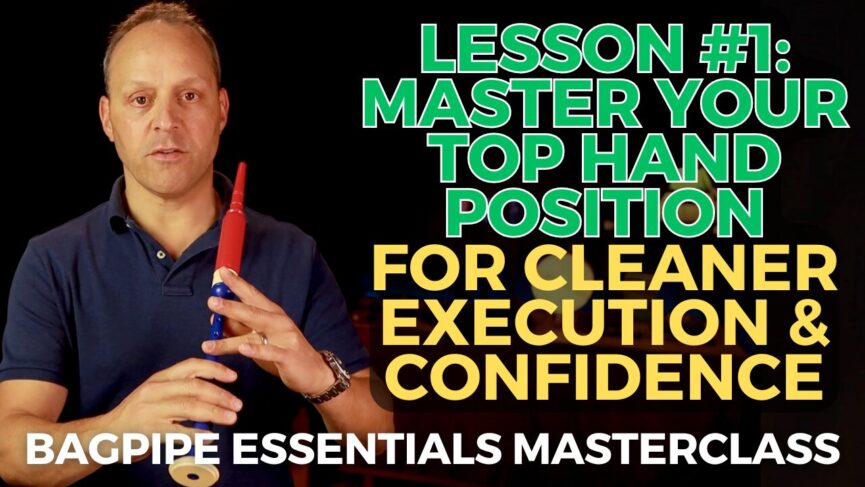
AS FEATURED IN

Introducing the Tone Protector: Protect your Sound
by Jori Chisholm, Founder of BagpipeLessons.com
Last Update: April 11, 2025
The humidity in our surrounding environment is constantly changing. This changes the moisture content in the reed, which affects nearly every aspect of reed performance: pitch, volume, strength, efficiency, stability, sound clarity and the tuning of individual notes.
A reed that is too dry will sound shrill, sharp and thin. A reed that is too wet will sound flat, muffled and rough. Keeping your reed at a constant humidity level is the single easiest and most powerful thing you can do to immediately improve your bagpipe sound.
To do this, I’ve come up with a patented design that keeps your reed at constant humidity level to ensure consistent, optimal reed performance. The Tone Protector has been played by pipers and pipe bands around the world and the results have totally blown away all of my highest expectations.
Watch the video and scroll down to read the full transcript.
Video Transcript: I’m excited to tell you about my new product. It’s the world’s first digital chanter cap with two-way humidity control. It’s called the Tone Protector and you use it to store your reed when you’re not playing it: stored at a precise and constant humidity level.
Now, we pipers spend lots of time and expense and effort to buy good reeds, find good reeds, to break them in, to get them set up, adjust the reed just right to get a good sound. But I’ll tell you, even for experienced pipers, it can be hard to get a warm, rich, stable, consistent sound from day to day.
One of the things that I’ve discovered in over 30 years as a piper, a bagpipe teacher, playing in bands and competing around the world, is that cane chanter reeds are extremely sensitive to moisture. In fact, the moisture content of that reed affects everything about how the reed sounds and feels. It affects the overall strength of the reed, how efficient your pipes are, the volume, the overall pitch, the stability of the tuning of individual notes. The tonal quality of the reed, is it warm, rich and full, or is it thin,raspy and dull? And the overall stability, in terms of how does the reed change over time as you play it, and how does the reed react to changes in blowing pressure?
All of those are affected to a huge degree by the moisture content in the reed, and then the moisture content in the reed is determined by the humidity of the surrounding air, where you store your reed when you’re not playing it.
How many times has something like this happened to you? You’re getting ready for a competition or a performance, and in the weeks and the days leading up to the event, everything is going great, your pipes are sounding good, you’re working on your tunes, everything is working, and then something happens. Maybe it’s a couple days before the competition, maybe it’s the day-of, maybe it’s while you’re playing, something horrible happens.
The reed starts going sharp. Starts going flat, it gets too hard, it gets too easy, it starts chirping, it starts cutting out the high, it gets all scratchy. Or the F starts collapsing, or something awful happens. I’m convinced that all, or nearly all, of those crazy, unpredictable, awful things that happen with chanter reeds that can totally ruin our performance, are caused by your chanter reed being kept when you’re not playing it, in an environment where the humidity is constantly changing.
Now, I was amazed to read that in a single place, the humidity can change in a single day by more than 50%. If you add in playing indoors and playing outdoors, playing in the sun or playing in the shade, playing in the morning or playing in the evening, and then you add in travel, those swings in humidity can be even bigger. I’ve discovered that the single most powerful and simplest thing you can do to immediately improve the quality of your chanter sound, the stability of your chanter sound, and the overall consistency from day-to-day, is to store your chanter reed at a precise, controlled, and constant humidity level.
That’s what the Tone Protector does. You store your reed in the Tone Protector when you’re not playing it, and then play like normal, and then put it back. That’s all you have to do, every time you play your pipes. It’s going to feel like you just played them, just how they felt the day before.
A warmer, richer, fuller sound, more stable, more consistent. Any new adjustments that you do with your tuning are going to hold from day-to-day. It always feels like you’ve just played your pipes, even if you take several days off.
Now, great pipers, or top pipers know that their pipes will be the most stable and have the best sound, the most consistent, when played regularly, every day or maybe even twice a day or more. The Tone Protector controls the humidity level around that reed, therefore controlling the moisture content in your reed, so you can achieve those kinds of results even if you take several days off.
So, let’s take a look. On the top, we have a digital thermometer and hygrometer. The hygrometer measures humidity in the Tone Protector, and the thermometer measures the temperature. You can choose if you want to display Fahrenheit or Celsius. There’s an extra-large thumb screw for getting a really good, secure fit on your chanter.
Now, on the inside is where the magic happens. You put your reed on the inside there. Now, this right here is the magic part. So, what this little thing right in there, right next to your reed does, is it will precisely control the humidity level inside the Tone Protector, 24 hours a day. If it’s too dry, it will release water, and if it’s too wet, it will absorb water. And no matter where you go in the world, and no matter what is happening outside, in terms of the humidity or the climate, on the inside, it’s always going to be the same. And this technology keeps it at the precise humidity level that you choose, within 1%.
I’ve been testing out various versions and prototypes and experimenting with this Tone Protector for almost three years now. I’ve sent Tone Protectors to pipers around the world, across North America, Australia, Scotland, the UK, and also Europe, and the feedback I’ve been hearing from people has been really, really positive. Improved overall sound, shorter warm-up times, greater consistency from day-to-day, improved stability in terms of blowing, but also over time. Also, any tiny little tuning adjustments that you make to your reed or to your pipe, they will hold from day to day. So, fewer worries, fewer surprises, no more reed emergencies, and maximum confidence. That’s what people are telling me that they’re getting with their Tone Protector.
If you think about the major innovations in technology that have allowed pipers to get a better and more consistent sound, we think about synthetic drone reeds and moisture control systems, but there hasn’t been anything that has really improved the chanter component of the bagpipe sound.
Now you have for the first time the ability to precisely control the moisture content in your reed by controlling the humidity of the air where your reed is stored. We have the ability to get a warmer, richer, more stable, more consistent sound, and a higher overall quality of sound by controlling the moisture content in our reeds.
It comes in four colors: red, blue, black, and green, so you can pick a color for all of your chanters, for your band and solo, and backup chanters. I currently have three chanters going, and it makes it really easy to have multiple reeds and multiple chanters and have backups and spares because your reed is always ready to go.
I hope you’ll come visit us at ToneProtector.com. You can see more pictures and videos up-close with the Tone Protector. You can read some testimonials from pipers who have tried it and shared some of the amazing results they’ve had, and you can order one for yourself.
Thanks very much.






